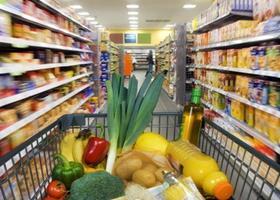
Consumers across Europe spent more on everyday items in the final quarter of 2016 than at any other point in the year, Nielsen retail data has revealed.
Grocery retailers across 21 European countries saw a 1.8 per cent year-on-year increase in takings in the final quarter of 2016 at the till for fast-moving consumer goods (FMCGs), including food, drinks and toiletries – the highest growth since the end of 2015.
This 1.8 per cent increase was a combination of a 0.9 per cent increase in prices paid and a 0.8 per cent rise in the volume purchased.
In 2016, the value of the European FMCG shopping basket as a whole was 41 per cent higher than in 2006, while the amount of goods purchased has increased by 11 per cent.
In that time, Turkey has seen the highest rise among the 21 countries, tripling over the decade, while Greece was the only one to see a decline (-11 per cent) since 2006.
“The value of the shopping basket has increased due to a number of factors including inflationary price rises, people buying more goods and changing their product mix by swapping in more premium and fresh foods,” explained Nielsen’s Olivier Deschamps.
Comparing the final quarter of 2015 to the final quarter of 2016, Turkey had the highest growth in takings at the tills (+8.8 per cent), followed by Poland (+4.7 per cent) and Hungary (+4.5 per cent). At the other end of the scale, the biggest declines were in Finland (-3.5 per cent) and Greece (-2.9 per cent).
Spain’s growth rate (+3.6 per cent) was the highest among the big five western European markets, followed by Italy (+1.6 per cent). Germany had the lowest growth among this group (+0.3 per cent), and the fourth lowest among all 21 countries.
“After the weak start to 2016, when sales growths slowed, it was a stronger end to the year for the food retail industry,” said Deschamps. “Although consumer confidence held steady, it remained low and growths in 2016 were generally lower than in previous years with volume growth at its lowest since 2013. Things improved in the second half of the year, mainly driven by central European countries and Iberia.
“In contrast, western Europe saw little momentum in volume sales, alongside unit value deflation in Spain and Italy and low inflation in France and the UK.”



